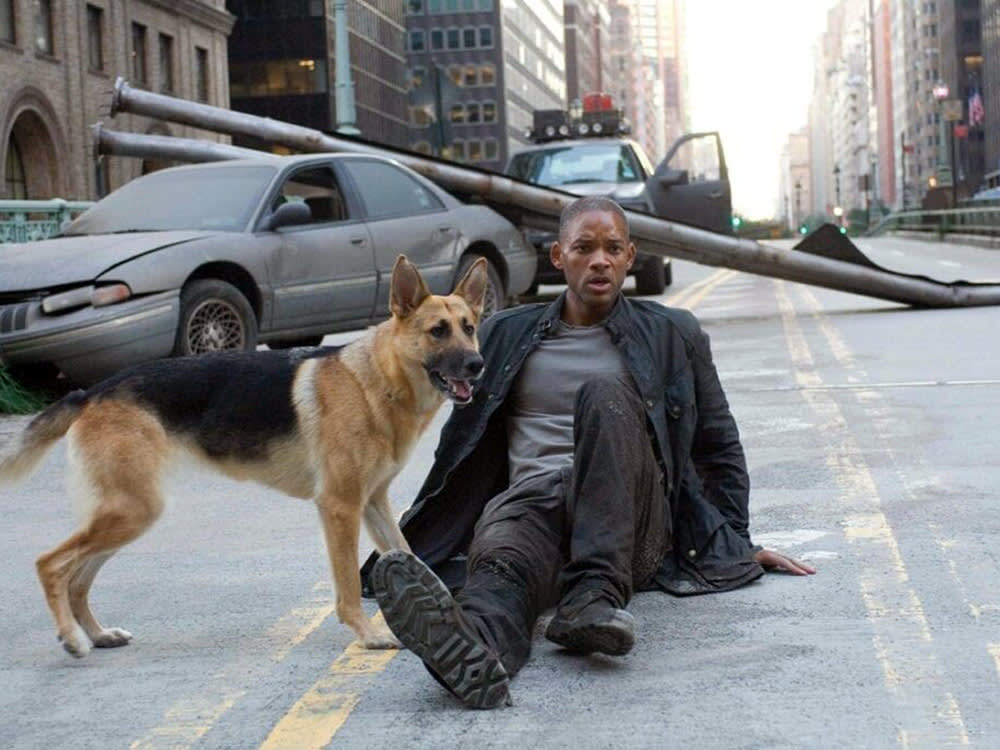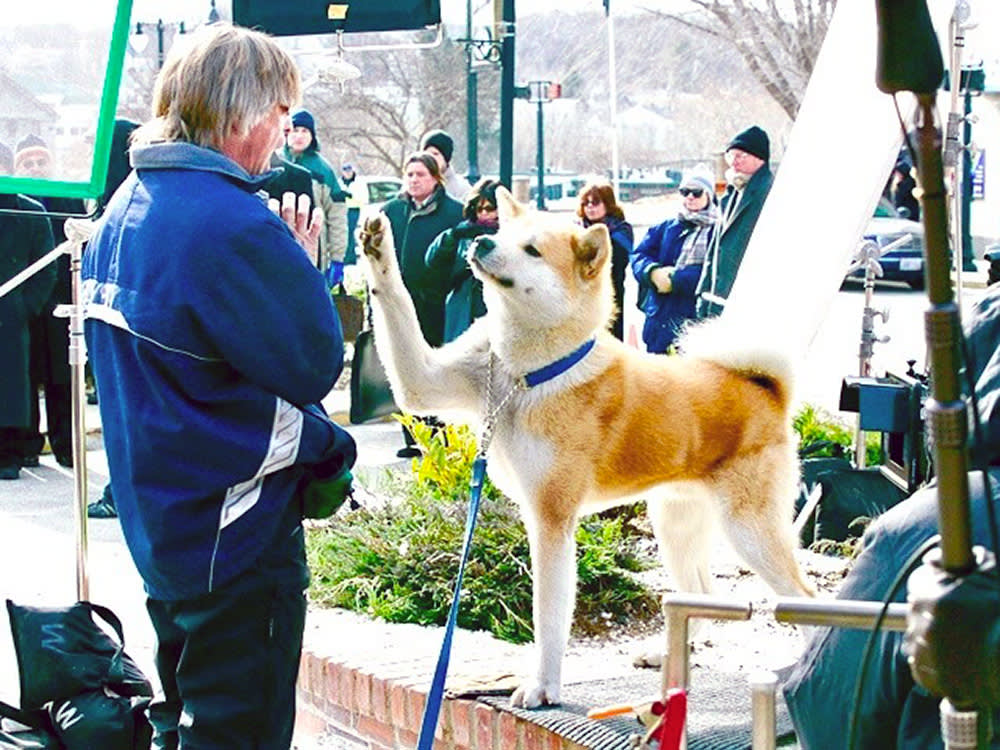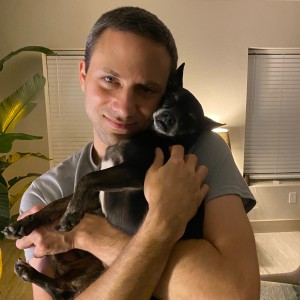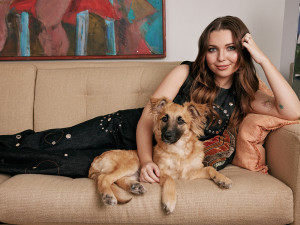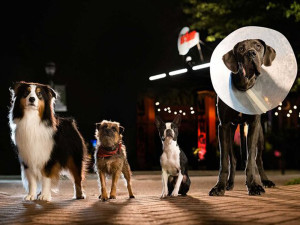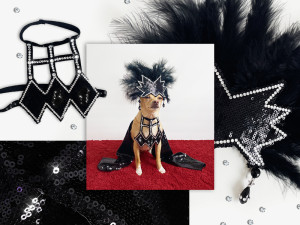What It’s Like to Be a Hollywood Animal Trainer
“One day you’re working with Meryl Streep, and the next day you literally have a pony at somebody’s party.”
After a year of industry strikes, Hollywood seems to be back on track. The Golden Globes aired on January 7, with the postponed Emmy Awards following a week later. With nominations just announcedopens in new tab, Oscar season is upon us, and it’s officially the time of year to battle our seasonal depression by suddenly caring about movies a lot. And do you know what’s a bonus when you’re binging a bunch of movies? When those movies have dogs (and really, any prominently featured animals) in them. For example, this year’s crop of Best Picture nominees includes 2023’s Anatomy of a Fall, in which Cannes Award-winning pup Messi made a big impression on audiences.
As much as we love the dogs in these movies, we know there are some wildly skilled trainers who got them to where they are. So, while we all sit on our couches and watch endless hours of critically-acclaimed films this winter, Kinship spoke to some of the trainers behind the canine stars of your favorite film and tv moments about the ins and outs of training for the screen.
How to get a dog to turn in a Streep-level performance.
Steve Berens spent four months training Gus, a young Goldendoodle with no professional experience, for an important role in the new Apple TV+ series Lessons in Chemistry. Gus had been cast as a charmer named Six-Thirty who escapes harsh military drills and finds refuge with Elizabeth Zott, a self-sustaining scientist played by Brie Larson. Six-Thirty is all but human: perceptive, empathetic, desperate to love and be loved. For the character to shine, Berens had to teach Gus not only to hit his marks but to emote on cue.
Often, animal trainers agree, that’s harder than preparing a dog to perform choreographed stunts, as Berens did with the Jack Russell terrier that leaps to Jim Carreyopens in new tab’ s aidopens in new tab in The Mask (1994). For Lessons in Chemistry, he coached Gus to knock over a trash can outside Elizabeth’s house and nibble on the food that pours out of it. But the clincher was the expression Six-Thirty would give Elizabeth when she first sees him. He needed to seem starved for her affection, an immediate sign that he is meant to be her companion. When the time came, Gus nailed it.
How much do you spend on your pet per year?
There’s a famous showbiz maxim commonly attributed to W.C. Fields, the vaudeville jester who appeared in early Hollywood comedies: Never work with children or animals. But the many trainers who prepare species of all kinds for movie and TV parts heartily disagree. Just look at what animals can achieve on-screen — emotionally and physically — with the help of a talented handler.
This is not a job for the faint of heart.
Bernes once readied an inexperienced German shepherd to be Will Smith’s number-one girl in I Am Legend (2007). For The Wolf of Wall Street (2013), Kim Krafsy prepped Leonardo DiCaprio to strut around a Manhattan office holding a chimpanzee that had the attention span of a two-year-old. Mark Harden helped Geoffrey Rush feel comfortable with an “annoying” monkey perched on his shoulder as a horde of raiders wielding firebrands darted around the set of Pirates of the Caribbean (2003). One of Harden’s favorite experiences found him priming 600 ratsopens in new tab to share scenes with Crispin Glover in the 2003 horror flick Willard.
These trainers and others like them have some of the most complex jobs in the animal business. Many run farms or ranches with menageries waiting to be cast in everything from film, television, and commercials to birthdays and charity events.
“One day you’re working with Meryl Streep, and the next day you literally have a pony at somebody’s party,” Harden tells Kinship. In 1989, he corralled swans and peacocks for a gala celebrating Ronald Reagan’s California homecoming after his presidency ended.
Tamara Brock, who grew up wishing animals could talk and began working with horses at age 13, says the trick to working with animals is to avoid projecting human experiences or viewpoints onto them. We may try to read animals’ faces, but they learn according to their species’ innate social characteristics.
Brock owns Novel Animalsopens in new tab, a New Mexico-based operation that cultivates domestic and exotic critters alike for production gigs. She’s trained tigers for Life of Pi (2012), camels and kangaroos for Saving Mr. Banks (2013) wolves for the 2010 thriller Frozen, and Lee Pace’s bighearted golden retrieveropens in new tab for the series Pushing Daisies (2007-2009).
You have to be ready for anything.
W.C. Fields’ philosophy may be hyperbolic, but he’s right that animals add unpredictability to sets, where every passing minute costs money. If an actor misses a mark during a stunt, the animal might not know what to do. If a piece of equipment gets in the way — like a low-flying drone camera that Krafsky says caused a few horses to panic while making HBO’s The Gilded Age — the shot is wasted.
For her most challenging project to date, Brock primed a pit bull to pull off the detailed fight between Brad Pitt and the Manson cult at the end of Quentin Tarantino’s Once Upon a Time…in Hollywood (2019).
In fact, she trained three Pits to portray Brandy: a “hero” type who would show affection, a playful one, and a super-talented pup who could assail the intruders when they show up to murder an LSD-dosed Cliff (Pitt) and his oblivious boss (DiCaprio). When Pitt wasn’t shooting, he could sometimes be found on a soundstage bonding with Sayuri, who played Brandy at her sweetest. They needed to be simpatico enough for the actor to take a bone away from Sayuri without upsetting her. In other words, Brock was responsible for protecting one of Hollywood’s most valuable assets: Brad Pitt’s face.
Brock and the stunt team spent three weeks rehearsing the fight sequence, in which Brandy jumps off a couch, knocks a revolver out of Austin Butler’s hand, bites his wrist, and mauls his crotch (without actually hurting anyone, of course). A couple of days before they shot the scene, Tarantino was still adding to the action. But by then, Brock says Cerberus, who did Brandy’s defense choreography, was so well-trained that he could handle anything. When Tarantino suggested using a puppet at the last minute, Brock was determined to show him what Cer was capable of. Impressed, Tarantino reverted back to the original plan.
Animals are the real stars of these films—for good reason.
“A lot of times, directors believe they’re going to waste time with animals,” says Brock, who also worked on Tarantino’s Django Unchained (2012). “But I want them to see how much an animal adds to the quality of a film, how much atmosphere it creates. Even if it’s not something that’s super obvious, it still gives you a bigger, broader feeling. It’s like lighting or music or all the other things we use in storytelling to involve people’s emotions.”
Sometimes, trainers manage to slip their own pets into movies, too. Krafsky cast her cats, Towne and Merle, in the Oscar-nominated dramedy Can You Ever Forgive Me? (2018) starring Melissa McCarthy, with whom she adored working. (Director Marielle Heller once called Towneopens in new tab the Marlon Brando of cats.)
In the 2007 Mike White-directed comedy Year of the Dog, Molly Shannon favored a Chesapeake Bay Retriever while interacting with a dozen-some other pooches because she knew that dog was Harden’s family pet.
As production budgets and safety standards have ballooned throughout Hollywood's history, so has trainers’ esteem. For good reason, it’s a thoroughly regulated job full of checks and balances. Most productions that employ trainers have a representative from a welfare organization, such as American Humaneopens in new tab, present to make sure no animals are mistreated. Trainers themselves can become members of a local Teamsters Union, ensuring they, too, have industry protections.
Often, trainers are stationed behind the camera to prompt animals as needed. The trick is doing so without impeding the actors. During Lessons in Chemistry, Berens felt like he got in Larson’s way a few times. Who could blame him? It was Gus’s first gig, and the little guy had a lot to do.
Although things can go wrong — HBO canceledopens in new tab the 2012 Dustin Hoffman series Luck after three horses died — but the trainers who spoke to Kinship say that most actors and directors collaborate well with animals. Sometimes, they even collaborate too well. While making the 2014 crime drama The Drop (2014), Tom Hardy loved one of the film’s puppies so much he would take them to his hotel room overnight, Krafsy recalls.
“My biggest problem on that movie was I couldn’t keep people away from the puppies when we were not shooting,” she says.


